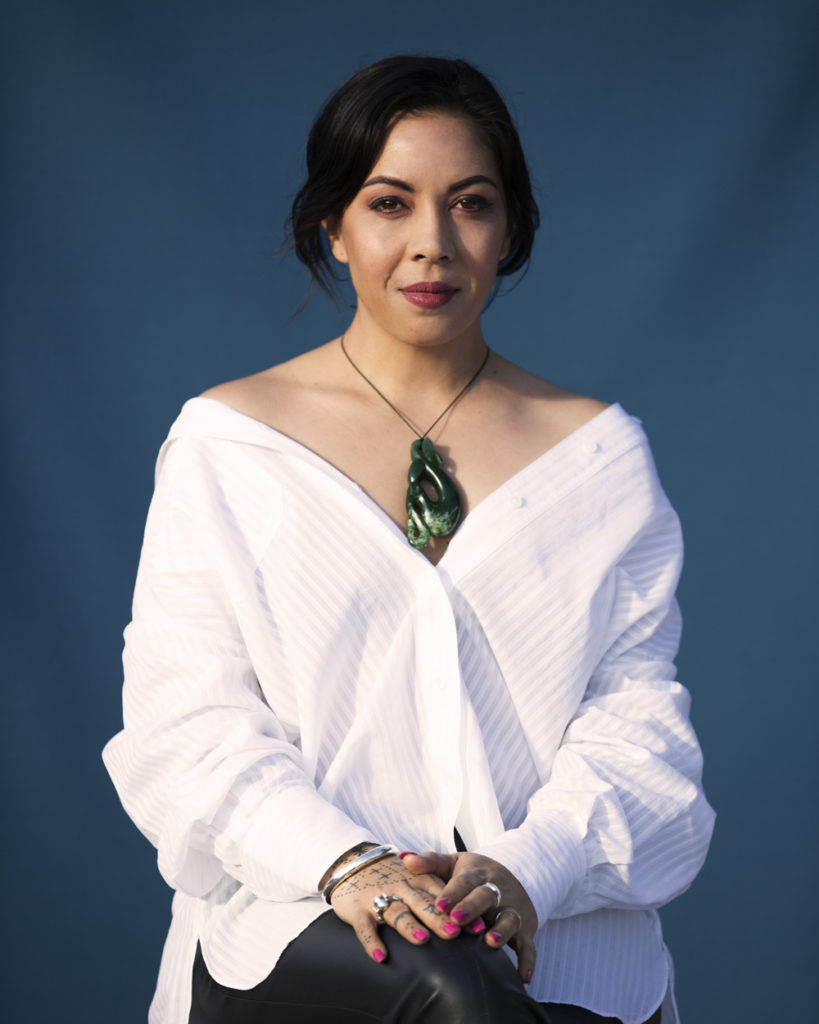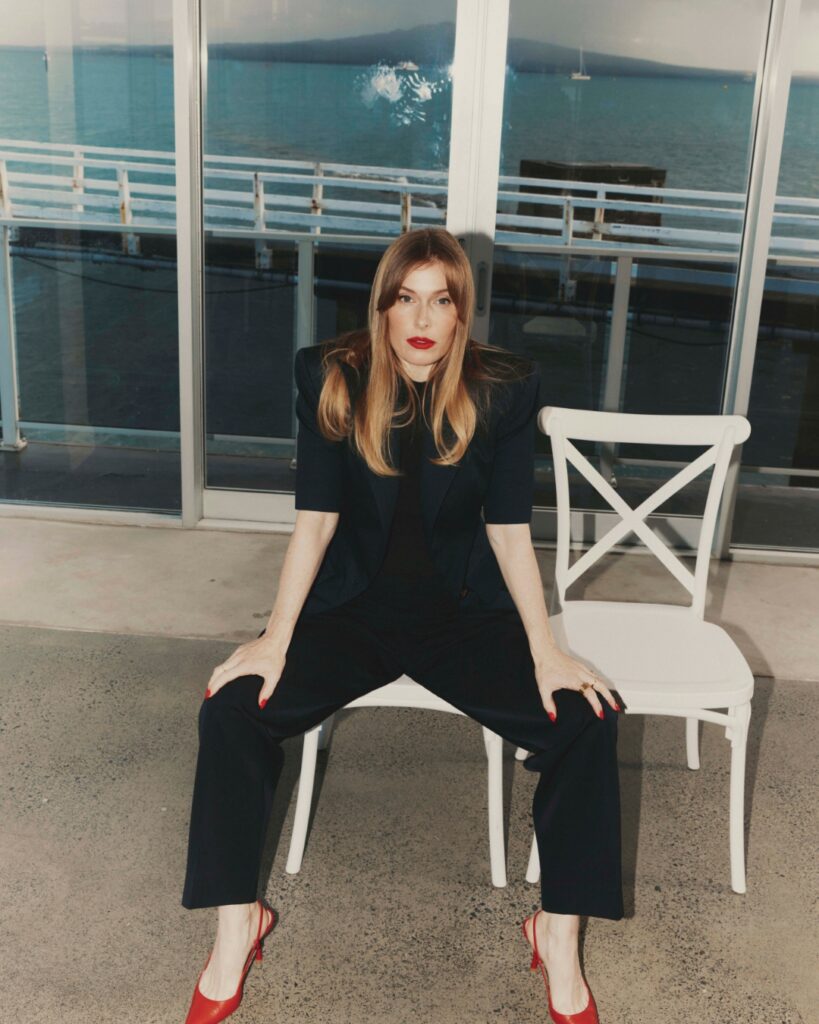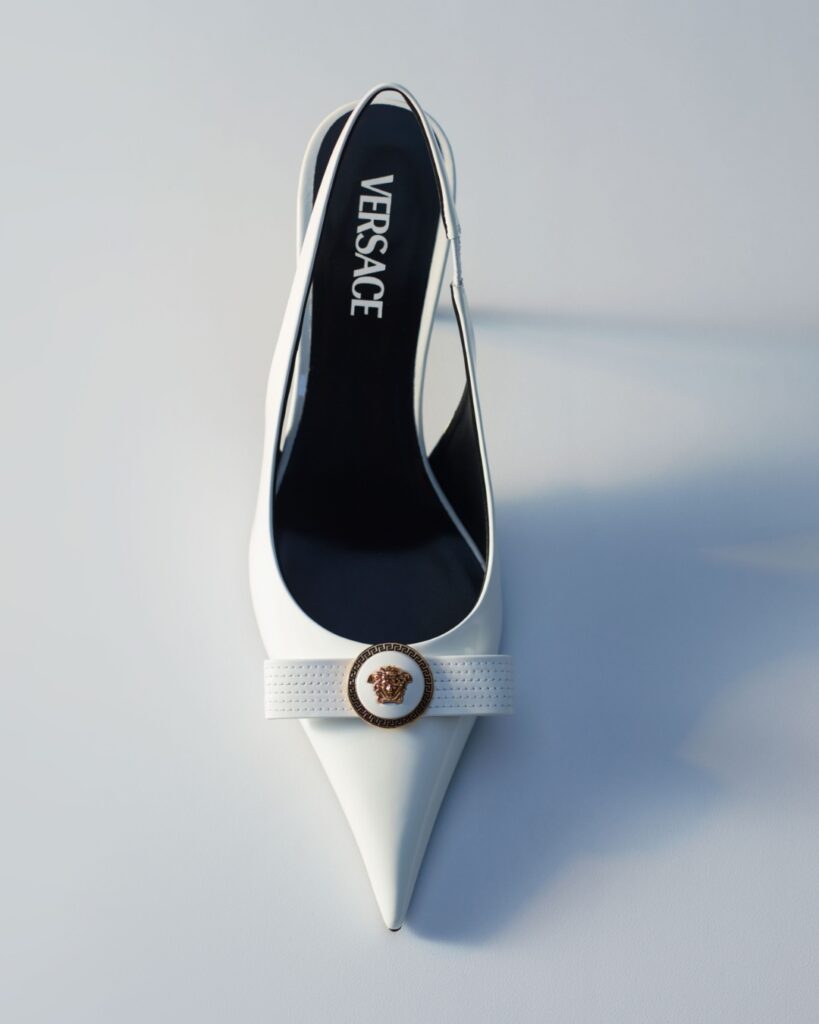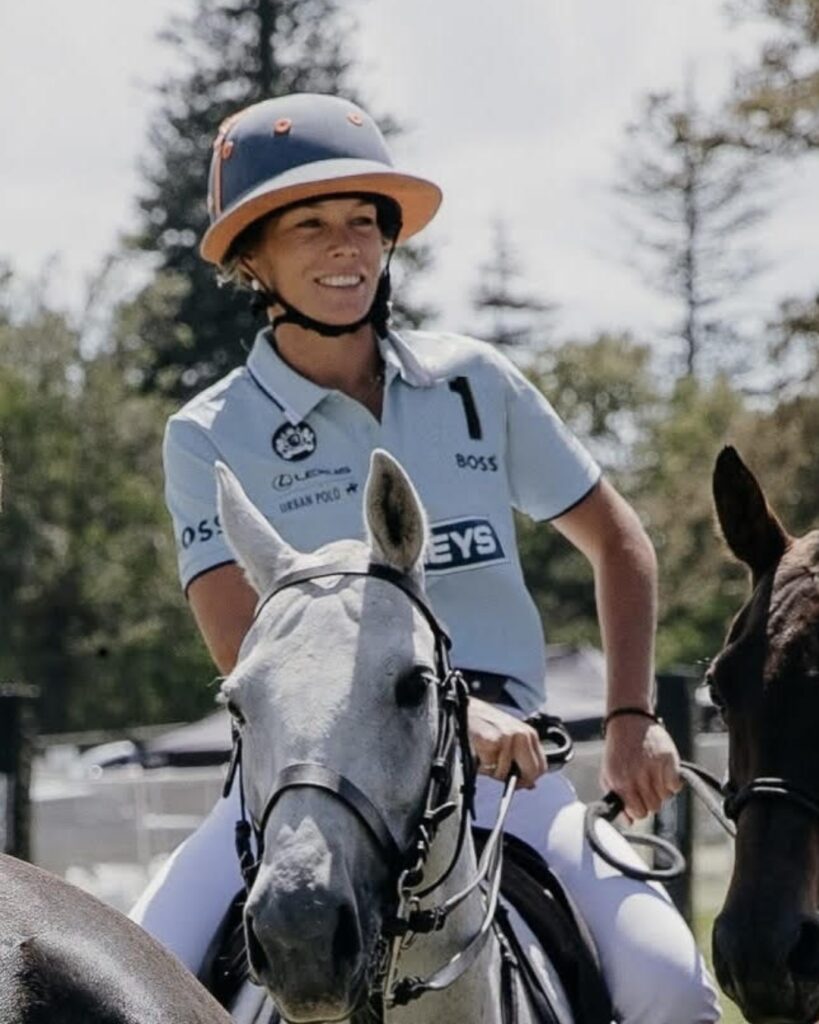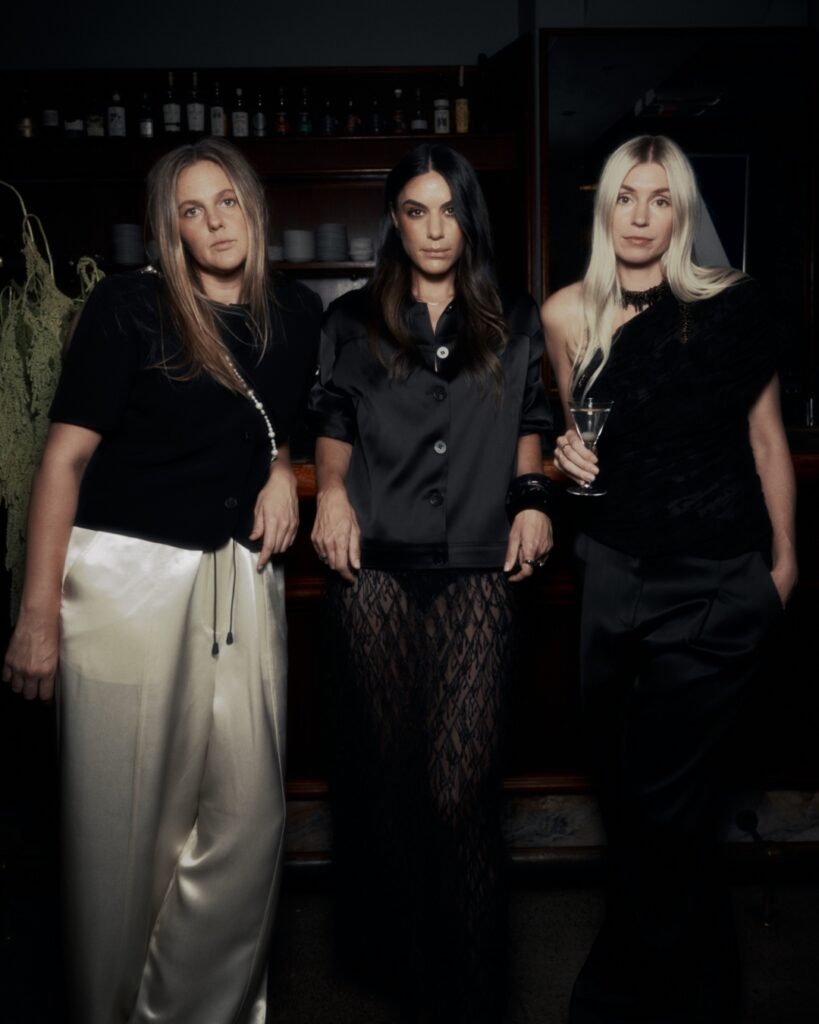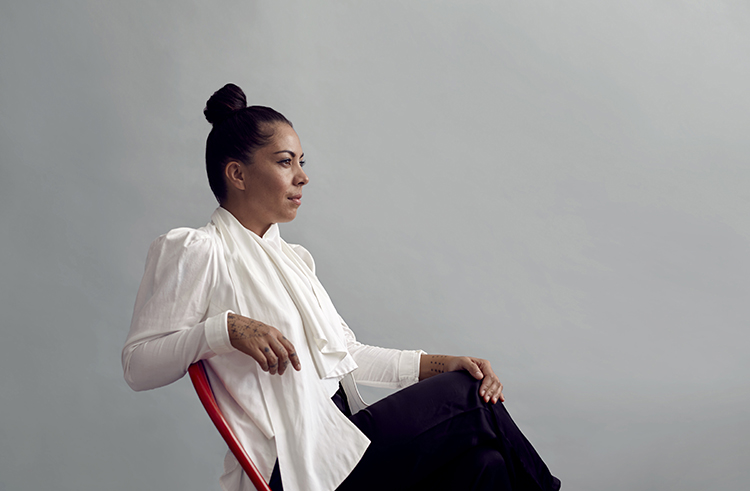
As part of our first annual Fashion Quarterly Power List we’re talking to some of the women about getting work done on-the-go.
In association with the new Samsung Galaxy Note10 – which allows busy people to get more things done – we’ve highlighted a selection of dynamic, creative Kiwi women who are shaping their communities and creating change. First in the series is choreographer and artistic director of Tempo Dance Festival Cat Ruka.
RELATED: Meet the 20 creative leaders making up Fashion Quarterly’s Power List for 2019
Well connected within the local arts scene, Cat was named as the new artistic director of dance festival Tempo in February and has quickly made her mark by securing the likes of Parris Goebel to perform.
She uses her mobile device constantly in her role as artistic director, as well as to organise her family’s schedule, find inspiration and collaborators around the world, and engage in dialogue with her creative community.
Her background reflects her inclusive approach, having worked as a teacher at the Manukau Institute of Technology and mentor for youth organisation Ngā Rangatahi Toa. As well as her passion for growing dance in Aotearoa, she’s currently completing her PhD in Decolonial Practices for the Arts.
Could you describe a standard day for you?
On a weekday I start with meditation and gratitude practice at 6:30am before getting myself and my daughter ready for the day. The two of us then travel to her kura and I drop her off before heading into the city for meetings spliced with small moments of attending to the urgent emails!
I head back to my daughter’s school for pick-up followed by an after-school activity like dancing or gymnastics. A couple of nights a week I head back into the city to see a show, but if there’s nothing on we head home for whānau kai and I’m back into my work soon after that until about 10pm each night.
How often do you use your mobile device and what do you use it for?
I use my mobile device all the time and though I’m a little resistant to admit it, I couldn’t live without it. Obviously I use it a lot for work calls and quick emails but it’s also vital for me to be able to post to the Tempo social accounts twice a day now that we’re in the festival lead-up. Having quick access to my Dropbox app is awesome as it allows me to upload and share videos quickly with my marketing team at a second’s notice. Because I’m a creative I’m also constantly creating digital mood-boards on my mobile device when I see images I’m inspired by online.
How does technology help you navigate life and your daily hustle?
My mobile device is crucial when it comes to parenting. Because my partner and I are both freelance contractors our plans for the day will sometimes change without warning, so our devices allow us to organise back-up plans really quickly for school pick-ups or commitments our daughter might have. I couldn’t live without my calendar app on my phone as well – I’m one of those people who needs to enter meetings into my phone straight away and have alarm notifications set or there’s no way I’ll remember to turn up! Many people can testify to this.
Does technology help facilitate the work that you do, if so how?
Because Tempo has a digital marketing strategy, our mobile devices are becoming more and more important as tools to quickly generate and share digital content both between the team as well as externally. As we get closer and closer to the opening of the festival we also need to be able to contact each other at all hours of the day through various platforms, which our mobile devices allow us to do.
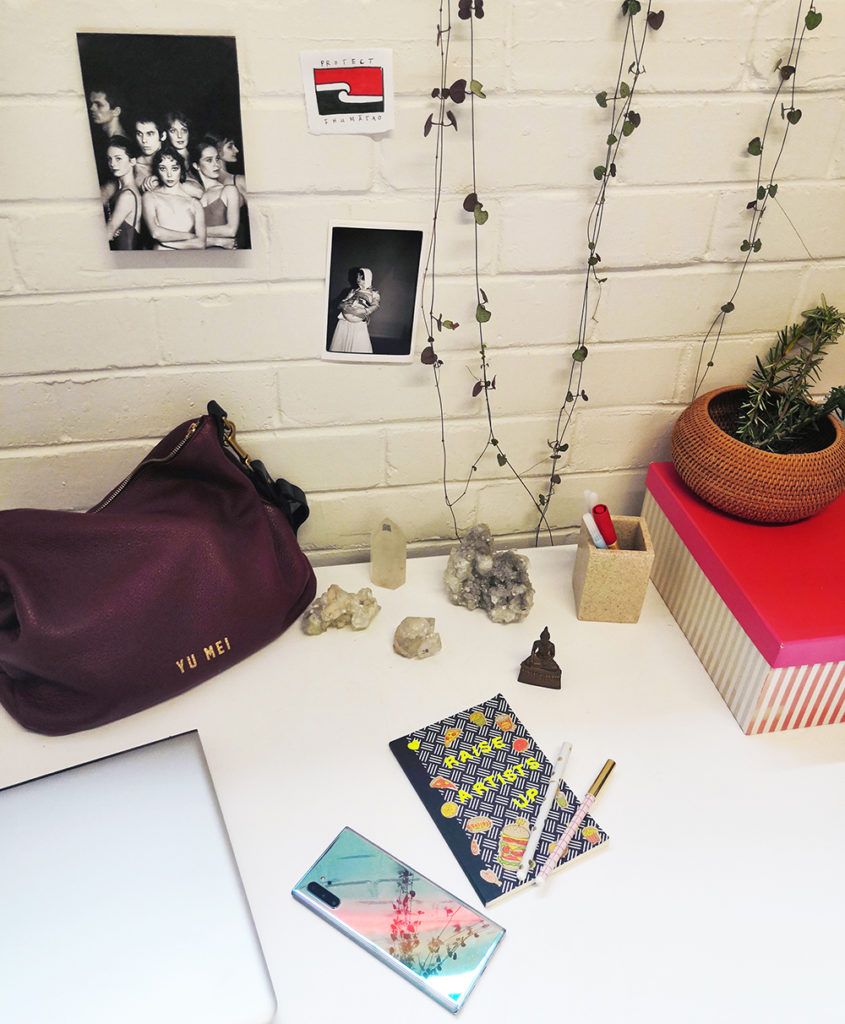
How has the new Samsung Galaxy Note 10 impacted your work?
The Samsung Galaxy Note10 is not only super fast, but it takes really high quality images – which allows me to really lift our digital marketing content and take it to the next level, enhancing our reach and enabling us to connect with communities, giving us a wider platform through which to give a voice to those who haven’t had one.
As far as fostering education and dialogue around dance and creative practices, how does technology support this?
Even though we are in the business of staging live performance, digital content creation and online platforms play a crucial role in us being able to reach our audiences and build interest and trust from communities we are engaging with for the first time. Technology enables us to tell stories about Tempo and our artists (and dance in general) in new and unexpected ways. We strive to use technology in a transformative way for our artists; so that they can be seen, heard and appreciated for the incredible work they do.
Do you use technology and your mobile device to find fresh talent, new ideas and possible collaborators?
Definitely! Sadly it’s not possible for me to travel the world all year round visiting artists and going to shows, so I’m on my mobile device all the time stalking the Insta-feeds for videos of the next breakthrough artist. My curatorial style is eclectic and diverse and there’s really no other database in existence that brings artists from different countries and cultures and sub-cultures into one space like Instagram does.
As a creative, has technology and the digital world helped open up a broader sphere of conversation and action for you?
Without a doubt. To be honest I’ve always felt quite isolated as a creative in Aotearoa because I’m so influenced by aesthetics and styles from elsewhere. When I’m in places like New York or Berlin or even Melbourne I feel like I can express myself in a more expanded sense and I relish in the deep sense of belonging I experience with the street-cultures and arts communities in these sorts of cities. The digital world enables me to stay connected to creative communities overseas and be inspired by the actions they take. As a woman of colour working in the often-challenging arts sector, my online WOC community helps to keep me strong, confident and unapologetic.
Do you think technology and the evolution of mobile devices has changed the dance scene in any way?
Technology has changed the dance scene quite radically and I feel like my generation is still emotionally processing the need to let go of some of the pre-digital approaches to making and promoting work. I do like to put the old rose-tinted glasses of nostalgia on every now and then, and reminisce back to the old ways of making. I miss how dancers had to run through choreography a thousand million times and be certain that they had remembered the choreography in a deeply embodied sense in each rehearsal because there wasn’t a phone that could video the movement for the next practice.
I miss how creating a poster for your dance show was a really big deal, and you only had one shot at communicating your show to the public through this one artefact that you and your friends would illegally plaster all over the city at night.
Irrespective of all this, there is of course some important positives to the digitising of dance and I’m currently really enjoying embracing those things. I think the most exciting thing about it for me is that hierarchies and systems of privilege within the world of dance are being smashed apart, and opportunities and points of access into dance are being opened up for artists that might not otherwise have a shot at being seen and heard and appreciated. There are new and urgent voices in dance out there that technology helps us to platform in a meaningful and impactful way.
Tempo Dance Festival is on from October 2-12, find out more on tempo.co.nz.


